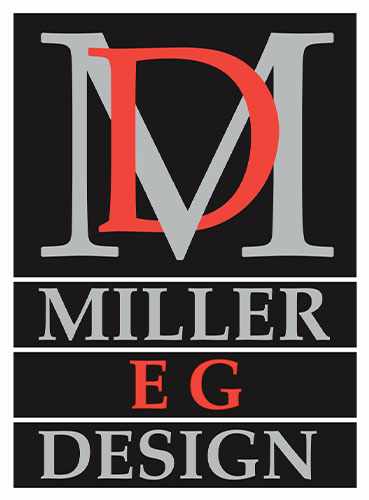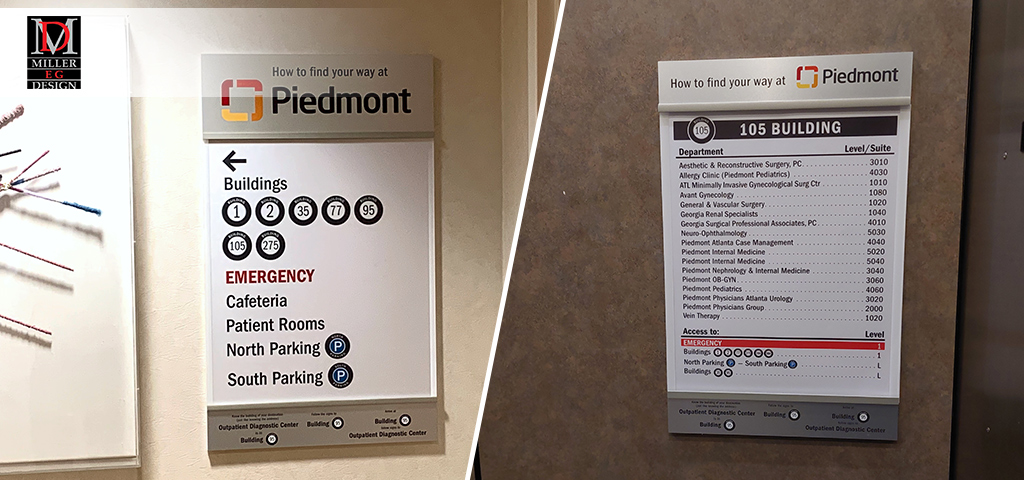In behavioral health facilities, creating a safe, welcoming, and functional environment is crucial to ensuring positive patient experiences and improving overall care. One often-overlooked aspect of facility design is wayfinding—the system that helps individuals navigate a space efficiently. At Miller EG Design, we understand that behavioral health environments require specialized wayfinding solutions that prioritize clarity, safety, and comfort. In this article, we explore the importance of effective wayfinding in behavioral health settings and how it can enhance both patient and staff experiences.
The Importance of Wayfinding in Behavioral Health Facilities
Behavioral health patients often experience heightened stress, anxiety, or cognitive challenges, making clear and intuitive navigation essential. Unlike traditional healthcare settings, behavioral health facilities serve individuals who may be dealing with mental health conditions, trauma, or neurodivergent behaviors. A poorly designed wayfinding system can increase frustration, confusion, and distress, whereas a well-planned one can foster a sense of security and control.
Wayfinding in behavioral health settings is not just about signage; it encompasses spatial planning, color psychology, and accessibility considerations. A thoughtfully designed system contributes to smoother patient movement, reduced staff intervention for directional assistance, and a more therapeutic environment overall.
Key Elements of an Effective Wayfinding System
To create a successful wayfinding system in a behavioral health facility, several key factors must be considered:
1. Clear and Simple Signage
Signage should be easy to understand, using simple language, universal symbols, and high-contrast colors. Icons and pictograms can be especially helpful for patients with cognitive impairments or language barriers. The placement of signs should be intuitive, guiding patients step by step from entrances to treatment rooms, waiting areas, and exits.
2. Color-Coded Zones
Colors can serve as powerful visual cues, helping patients associate specific areas with certain functions. For example, warm colors can indicate communal or relaxation spaces, while cooler hues might be used for clinical treatment areas. At Miller EG Design, we integrate color psychology into wayfinding strategies to create a calming and supportive environment.
3. Consistent and Logical Layouts
A well-structured layout minimizes confusion by ensuring that pathways are straightforward and do not contain unnecessary obstacles. Hallways should lead logically from one point to another, and entrances and exits should be clearly marked. Having a consistent design language throughout the facility reinforces familiarity and ease of navigation.
4. Minimizing Overstimulation
Behavioral health patients may be more sensitive to visual clutter or excessive stimulation. Overwhelming patterns, bright lights, or conflicting signs can create confusion and anxiety. Instead, wayfinding elements should be streamlined, with a balance of functionality and aesthetics that promote a sense of calm.
5. Incorporating Technology
Digital directories, interactive maps, and mobile wayfinding apps can enhance navigation, especially for visitors who may be unfamiliar with the facility. QR codes on signs can provide additional assistance through audio guides or multilingual translations, making the space more accessible for diverse populations.
The Benefits of Thoughtful Wayfinding in Behavioral Health Environments
An effective wayfinding system is beneficial to patients, visitors, and staff alike. Some of the key advantages include:
- Reduced Anxiety and Stress: When patients can navigate the space independently and confidently, they experience lower stress levels, leading to better engagement in their treatment.
- Improved Staff Efficiency: A clear wayfinding system minimizes the need for staff to frequently provide directions, allowing them to focus on patient care rather than navigation assistance.
- Enhanced Safety: Clearly marked emergency exits, restricted areas, and designated pathways contribute to a safer environment for both patients and employees.
- Increased Patient Satisfaction: A positive first impression through intuitive wayfinding can enhance overall satisfaction and reinforce trust in the facility.
- Better Accessibility: Ensuring wayfinding solutions accommodate individuals with mobility challenges, cognitive impairments, or language barriers makes the facility more inclusive.
Miller EG Design: Your Partner in Effective Wayfinding Solutions
At Miller EG Design, we specialize in creating tailored wayfinding solutions that align with the unique needs of behavioral health facilities. Our team combines expertise in signage, spatial planning, and visual communication to develop intuitive navigation systems that enhance the patient experience. From concept to installation, we work closely with healthcare providers to ensure that wayfinding elements support both function and aesthetics.
If you’re looking to improve the wayfinding experience in your behavioral health facility, Miller EG Design is here to help. Visit our office at 315 Northpoint Pkwy SE Suite F, Acworth, GA 30102, or contact us at (404) 788-0150 to learn more about our customized solutions. Let us help you create a space that prioritizes clarity, comfort, and care for all who enter.

